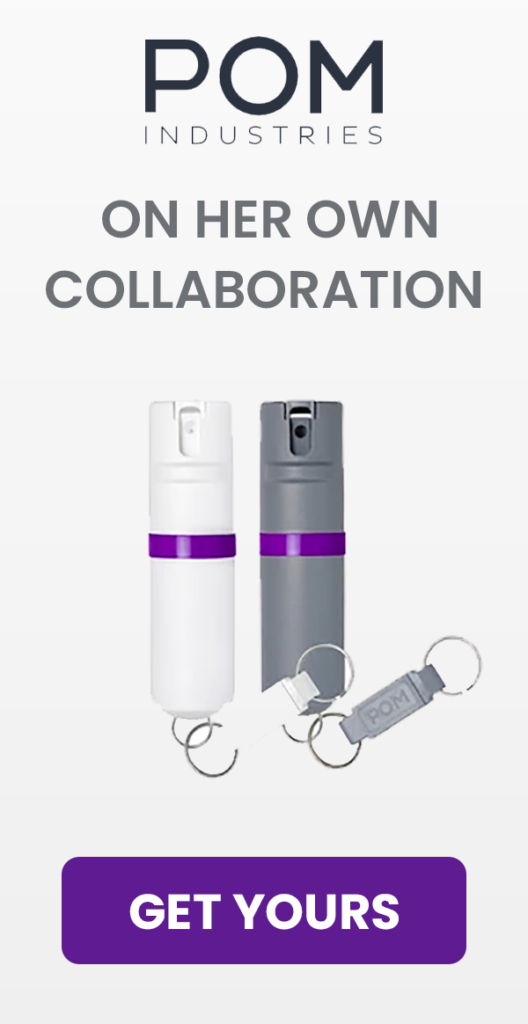I’ve been looking forward to today for quite a while. When Karl from InRangeTV and I decided to start collaborating, my mission was to find self-defense products and techniques, especially those targeted to women, and examine them in-depth to see if they’re legitimate or not. I don’t just look at them and make pronouncements, though. We buy products (unless there’s no other way to get them) and I learn the related techniques, as recommended by the people who espouse the tool. I share with you how they’re supposed to work, then put them to the test and debunk myths about them, all based on my deep background in self-defense, from both a shooting and combatives perspective, and my access to other experts. It’s all interesting work from my end, but as always with work, some is more interesting than the rest.
Our subject today is the Flashbang Bra Holster. It’s a uniquely female product because it attaches the carrier’s gun to their bra, not really a clothing item most men or male-identifying people wear. For that matter, not one that a fair number of women wear. It’s been around for a while now (I was introduced to it almost a decade ago by Kathy Jackson of Cornered Cat fame), and is surrounded by quite a lot of controversy, with claims that it is inherently unsafe and that it makes the gun far too inaccessible and difficult to draw, especially if the person carrying the gun is under any sort of psychological or physical pressure. However, it fits into a specific niche for women who are unable to carry a gun attached at waist level, because of temporary or permanent clothing choices or other concealment needs, so it still gets recommended. But is it a safe product? Can it be used in classes and on the range? Can the wearer get to the gun in the worst-case scenario of a hands-on attack?
To find out, I acquired a Flashbang for a small revolver I own, then asked them to make me an off-catalog version for the NextLevel Training SIRT PP, a laser training pistol modeled on subcompact carry guns. They agreed, sent me the gear, and then stayed completely neutral regarding the results. My results are not influenced by them in any way. In fact, Lisa, the owner and – full disclosure – a friend, specifically told me that she wanted my answer to those questions no matter what they were. If there were problems, she wanted to be able to address them appropriately. Do note that I’m looking only at the branded Flashbang bra holster, not “bra holsters” generically or any of the knockoffs that might be made by others.
Then I took myself and my gear to Craig Douglas’s Extreme Close Quarter Concepts (ECQC). ECQC is widely considered one of the gold standard classes for examining what Craig calls the problems of the gun fight at zero to five yards, what might also be called the “entangled fight.” Over the course of two and a half days, students perform live-fire drills with their concealed carry firearms, then learn, practice, and test skills applicable to an attacker who is coming at you from arm’s-length or closer. This was not my first time through ECQC, so I completed this entire iteration of the class from concealment using a Flashbang holster, with my revolver for live fire and switching to my SIRT PP for the rest of the class for safety reasons. I owe a debt of gratitude to Craig, his assistant instructors Shawn Lupka (Antifragile Training) and Jeff Bloovman (Armed Dynamics), and my classmates and training partners for allowing me to use ECQC as a laboratory and testing ground as we worked through my questions and their observations and suggestions.
The results? Well, you’ll need to watch the embedded above. It’s not short, but I promise the whole thing is worth your time whether you’re interested in the Flashbang Bra Holster generally, or in how it works in a fight specifically.
Want more about the thought process behind running the Flashbang in ECQC and why it does or doesn’t work? Come back on Friday, when Craig and I discuss how I got to this class with this gear and some of the accompanying considerations and caveats.




